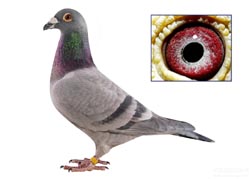
In daily life, we move our eyes frequently to search for or fixate a target of interest with the retinal fovea. Usually, they would dart from one position to another in the visual field at velocities higher than 500 degrees per second. This rapid eye movement is called a saccade.
From a physical point of view, when our eyes make a rapid and jerky movement, the image of an object moves swiftly across the retina, resulting in blurred and unstable visual perception. In fact, we can still perceive a stable and clear-cut world. Obviously, our brain makes a clever treatment of the contradiction between biology and physics of visual perception. However, little is known about the neural mechanisms behind the natural ingenuity.
A research team headed by Prof. WANG Shurong at the State Key Laboratory for Brain and Cognitive Sciences under the CAS Institute of Biophysics in Beijing recently discovered the neural circuits that modulate visual responses of brain neurons around the saccades in the pigeon, which might be critical for interpreting the mysteries of visual perception.
As the visual pathways in the pigeon are similar basically to those of mammals including human beings, with a comparable ability for visual cognition, experts believe that this discovery is of significance for explaining how our brain process visual information and modulate visual responses of cortical neurons during saccades.
As reported online in the April 6 issue of the prestigious journal
Nature -Neuroscience, the researchers examined saccadic responses in more than 300 neurons in five brain areas of pigeons. After analyzing the change in discharge frequencies and its time courses of these neurons in response to saccades, the authors discovered the neural circuits for transmitting corollary discharge signals from the brainstem raphe complex through the optokinetic nuclei to the visual thalamus as a relay station and finally to telencephalic neurons.
Experts say that this finding is of significance for revealing the mystery of how visual information is processed in the brain and how we can perceive a stable and clear visual world during saccades. In addition, it might inspire how to design visual robots with eye movements.







